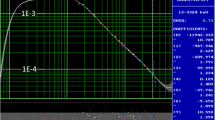Summary
Prompt gamma-ray neutron activation analysis (PGNAA) and neutron inelastic scattering (NIS) techniques have been widely used for measuring elemental composition in bulk samples. The neutrons and gamma-rays used in this technique are highly penetrating, which allows the analysis of large sample volumes. In the oil well logging industry, there are limitations on the size of detectors used -particularly the detector diameter. This limitation can lead to a low detection probability for the high energy gamma-rays. A new NaI detector arrangement (patent pending) has been designedto deal with this problem. The arrangement consists of two NaI detectors, one of which is a well type. The first detector is 1"×5" and the second is a well type 5" long with a wall thickness of 0.35" and a hole diameter of one inch. The first detector is placed inside of the well detector for use. Feasibility studies were performed with this arrangement using a 24Na radioactive source and a sulfur sample or prompt gamma-rays. An enhancement in the signal-to-noise ratio (SNR) was observed in both cases based on the peak height to continuum height in the resulting prompt gamma-ray spectra.
Similar content being viewed by others
Author information
Authors and Affiliations
Rights and permissions
About this article
Cite this article
Gardner, R., Metwally, W. & Han, X. A new NaI detector arrangement for efficient detection of high energy gamma-rays. J Radioanal Nucl Chem 264, 133–137 (2005). https://doi.org/10.1007/s10967-005-0685-x
Issue Date:
DOI: https://doi.org/10.1007/s10967-005-0685-x



